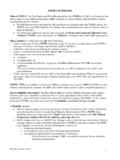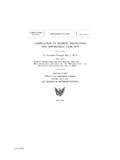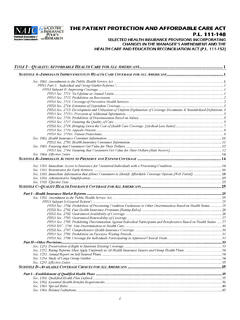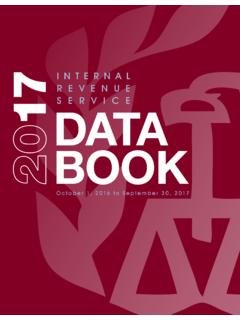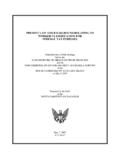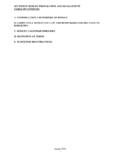Transcription of OECD Economic Surveys Italy
1 OECD Economic Surveys Italy February 2017 OVERVIEW This Overview is extracted from the 2017 Economic survey of Italy . The survey is published on the responsibility of the Economic and Development Review Committee (EDRC) of the OECD, which is charged with the examination of the Economic situation of member countries. This document and any map included herein are without prejudice to the status of or sovereignty over any territory, to the delimitation of international frontiers and boundaries and to the name of any territory, city or area OECD Economic Surveys : Italy OECD 2017 You can copy, download or print OECD content for your own use, and you can include excerpts from OECD publications, databases and multimedia products in your own documents, presentations, blogs, websites and teaching materials, provided that suitable acknowledgment of OECD as source and copyright owner is given.
2 All requests for public or commercial use and translation rights should be submitted to Requests for permission to photocopy portions of this material for public or commercial use shall be addressed directly to the Copyright Clearance Center (CCC) at or the Centre fran ais d exploitation du droit de copie (CFC) at OECD Economic Surveys : Italy OECD 20179 Executive summary The economy is recovering Despite ambitious reforms, doing business remains complicated, thus hinderingproductivity Reforming education and active labour market policies will improve inclusiveness1 EXECUTIVE SUMMARYOECD Economic Surveys : Italy OECD 201710 The economy is recoveringGrowth has resumed but productivityis still falling1 2 is recovering after a deep and longrecession. Structural reforms, accommodativemonetary and fiscal conditions, and lowcommodity prices have helped the economy to turnthe corner. The Jobs Act, part of a wide andambitious structural reform programme, and socialsecurity contribution exemptions have improvedthe labour market and raised employment.
3 Yet, therecovery remains weak and productivity continuesto decline. Returning the banking system to healthwill be crucial to revive growth and privateinvestment. More investment in infrastructure willbe essential to raise ambitious reforms, doing business remains complicated, thus hinderingproductivityIncreasing public administration efficiencyboosts firms productivity1 2 government has made significantprogress on tackling structural impediments togrowth and productivity. Yet public-administrationinefficiencies, slow judicial processes, poorlydesigned regulation and weak competition stillmake it difficult to do business in Italy . Labour andcapital resources are trapped in low-productivityfirms, which hold down wages and start-ups and SMEs continue to sufferfrom difficult access to bank and equity finance,curbing incomes for education and active labour market policies will improve inclusivenessSkills are low1 2 scores are low and job-skill mismatchis one of the highest among OECD countries,depressing earnings and well-being.
4 Many workersare under-skilled in the jobs they hold, highlightingmismatches between workers skills and thoserequired by employers. Improving the educationsystem and labour market policies are crucial toraising real wages, job satisfaction and Jobs Act and the Good School reformgo in the right direction and need to be 2007 2009 2011 2013 2015 2017 Real GDPT otal factor productivity (trend)Y-o-Y % productivityTotal factor productivity% pts increase on firm level productivity due to a standard deviation increase in public administration efficiencyLiteracy score230240250260270280 ItalyOECD average2 EXECUTIVE SUMMARYOECD Economic Surveys : Italy OECD 201711 MAIN CHALLENGESKEY RECOMMENDATIONSM acroeconomic and financial policies to sustain inclusive growthThe planned fiscal stance isappropriate. Weak Economic growth,low inflation and high tax evasion arecontributing to the slow reduction inthe budget deficit and high public spending restraint has partlyrelied on infrastructure-spending on the path of prudent fiscal policies and prioritisespending on effective infrastructure and innovation tax revenue by enhancing tax compliance (by investing morein IT systems and human resources, extending the use of e-invoicingand lowering the threshold for cash payments); and introducing realestate taxes based on updated cadastral additional tax revenues to gradually reduce social securitycontributions on permanent Italian banking system featureslow profits and high non-performingloans.
5 These weaknesses maydiscourage lending and has started to address to develop the secondary market for envisaged by the European Supervisory Mechanism, set gradual andbank-specific targets to reduce non-performing loans, backed up bysanctions such as additional provisions, asset sales, suspensionof dividend payments and restructuring banks public funds are needed to recapitalise distressed banks, take fulladvantage of EU regulations, imposing losses on equity andbondholders, and restructuring banks operations. Compensate retailbondholders for the losses they will and poorly targeted cashtransfers fail to reduce poverty ratesamong the young and legislate and implement the planned nationwide anti-povertyprogramme, target it towards the young and children and ensure it issufficiently business conditionsLow public administration efficiencyhurts private sector productivity andsocial efforts to enhance the efficiency and transparency of thepublic administration by: making further progress on e-services; fullyimplementing the broad public administration reform.
6 Amending theparts of public-administration reform blocked by the ConstitutionalCourt and swiftly implementing procedures are slow, costlyand debt-equity swaps more frequently by forcing creditors to sharethe burden of firm bottlenecks curb competitionin key professional services holding backperformance and reducing incentives the competition law under discussion by and knowledge basedcapital are low, especially amongsmall and medium enterprises. Theventure capital industry is small. TheGovernment has recently introduced awide array of measures addressingthese the effectiveness of recently introduced research anddevelopment tax credits and other fiscal incentives in terms ofinnovation outcomes and forgone tax the development of the venture capital industry by leveragingprivate funds and skills and matching skills with labour market needsThe unemployment rate is decreasingbut remains high, especially amongthe young and long term more specialised counsellors and profiling tools in the publicemployment the labour market impact of job-search and trainingprogrammes and focus funding on those that are performing skills are deficient.
7 The earlyschool leaving rate is decreasing yetremains partnerships between schools and businesses to create highquality work-based learning for students as envisaged by the GoodSchool share of workers with tertiaryeducation is low. Apprenticeships areunderused and the share of studentswith working experience is low. Post-secondary vocational education andtraining (VET) is up post-secondaryVET with strong involvement of the businesssector, based on the example of Istituti Tecnici a national body on VET involving the business sector and allkey stakeholders to link the training component of VET withapprenticeships; ensure high-quality workplace training and identifyskills needed in the labour Economic Surveys : Italy OECD 201713 Assessment and recommendations The economy is recovering gradually from a deep and long recession Reforms to improve the business environment and increase productivity Reforms to boost inclusive and sustainable growthThe statistical data for Israel are supplied by and under the responsibility of the relevant Israeliauthorities.
8 The use of such data by the OECD is without prejudice to the status of the Golan Heights,East Jerusalem and Israeli settlements in the West Bank under the terms of international AND RECOMMENDATIONSOECD Economic Surveys : Italy OECD 201714 Italy is emerging from a long and deep recession (Figure 1). Macroeconomic policiesinitiated by the Italian government and supportive monetary policy have contributed to theturnaround, along with lower commodity prices. The Jobs Act and social securitycontribution exemptions jolted the labour market, leading to rising employment andhigher consumer spending. Mildly expansionary fiscal policy is supporting progress has been made on the structural reform programme. Reforms indifferent areas, including the labour market, school system and public administration,have been passed and implemented or are in the course of implementation (Table 1).Greater focus has also been put on past reforms, with a sharp reduction in the backlog ofdecrees needed to implement them.
9 The rejection of the constitutional reform in areferendum in December 2016 has heightened political uncertainty but the structuralreform process must continue if Italy is to build a more inclusive society and improvegrowth , especially the Jobs Act and lower social security contributions, have startedto reverse the damages the crisis inflicted on the economy and the social fabric of thecountry. Since the start of the crisis, real GDP per capita dropped by about 10% and is nowat the same level as in 1997. Absolute poverty nearly doubled from its pre-crisis level,hitting especially hard youths and children. These developments have resulted in mixedwell-being outcomes. Italy performs well in some dimensions, such as work-life balance,social connections and health status, while it ranks below the OECD average in others, suchas subjective well-being, environmental quality, jobs and earnings, housing, and educationand skills (Figure 2).
10 Also, there is considerable heterogeneity across the population withFigure and productivity growth are recoveringSource: OECD Economic Outlook 100 Database, projections revised as of 20 January 2 factor productivity growth (smoothed)GDP growthEmployment growth% change% change6 ASSESSMENT AND RECOMMENDATIONSOECD Economic Surveys : Italy OECD 201715 Table elements of the reform programmeReformsPurpose of the reformApprovedTo be approved byInstitutional reformsElectoral lawStronger and more stable parliamentary majority Constitutional reform (confirmatory referendum)End the perfect bicameralism and centralise local governmentresponsibilitiesRejectedin December 2016referendumBill on the prevention of conflict of interestFor deputies and government membersMarch 2017 Labour market and social policiesJobs ActSingle open-ended contract, new unemployment benefitsystem (NASPI) ANPAL (National Agency)New ALMPs and agreements with regions Training voucherConditionality of unemployment benefits on activation Youth Guarantee schemeSecond phase Second level contractual bargainingLower taxation on firm-level negotiated productivity premium Jobs Act for self-employed workersStrengthen social protection for the self-employedJune 2017 Single family codeCoordination of legislation to support familiesJune 2017 Fight poverty and reorganise social servicesMore funds to combat poverty (2016 and 2017 budget laws).










